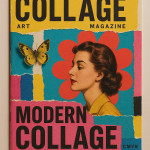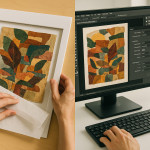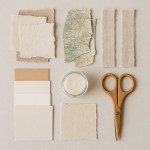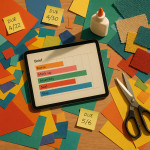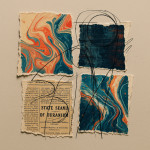Collage project briefs that inspire: aligning brand moodboards with cut-paper art
Looking for a fresh way to translate brand values into eye-catching visuals? Collage project briefs offer a playful, tactile route from moodboard to market-ready artwork. This guide shows you how to align brand moodboards with cut-paper art, craft briefs that inspire collagists, and secure approval faster—without sacrificing creative depth.
The magic of collage project briefs for modern brands
Unlike flat digital mock-ups, hand-cut collage pieces create layered stories your audience can almost touch. Brands that embrace collage signal authenticity, sustainability, and artistic courage—traits many consumers crave in 2024.
Why collage resonates with today's audiences
- Sensory appeal: Torn edges and textured papers break the slick sameness of purely digital campaigns.
- Story layering: Multiple images converge, letting brands fuse heritage and innovation in one frame.
- Eco-friendly potential: Reclaimed magazines and biodegradable glues support sustainability pledges. Learn more in our deep dive on eco-conscious material sourcing for physical collages.
Step-by-step: aligning a brand moodboard with cut-paper art
1. Audit the existing moodboard
Start by grouping brand assets into four buckets: colour palette, typography, iconography, and emotional keywords. Highlight overlaps—does “playful” appear alongside “heritage”? Those tensions become fertile collage material.
2. Define the collage objective
Is the artwork destined for an in-store display, packaging, or a hero social post? For packaging, you might need tight cropping and high resolution scans; for social, consider animated layers or short stop-motion loops.
3. Specify tactile elements
List preferred paper weights, found objects, or recycled materials. This turns the brief into a mini sourcing plan, saving your artist hours and you extra rounds of approval.
4. Map content hierarchy
Collage thrives on controlled chaos. Provide a simple wireframe indicating focal point, secondary imagery, and negative space so the artist layers confidently.
5. Lock technical specs early
Document final size, bleed, scan resolution (600 dpi minimum), and file format. If the artwork will be animated later, request layered TIFFs. Our guide to analog vs digital collage hand-offs explains why.
Template: high-performing collage project brief
| Brief Section | Key Details | Why It Matters |
|---|---|---|
| Project goal | Launch limited-edition tea packaging | Gives the collagist context and a clear success metric (sales lift) |
| Target emotion | “Comforting heritage meets modern joy” | Guides imagery choices and colour palette |
| Must-use assets | Logo, vintage botanical illustrations, Pantone 540C | Ensures brand consistency |
| Physical materials | Recycled kraft paper, gold leaf accents | Aligns with eco-pledges and premium positioning |
| Deliverables | Original collage (A3), 600 dpi scan, RGB JPEG, commercial licence | Eliminates post-project legal friction |
Collaboration workflow: brand, collagist, and creative team
- Kick-off call (30 minutes) Review the moodboard and brief line by line.
- Material sourcing phase (2–3 days) Artist shares snapshots of selected papers for quick approval.
- Low-fidelity mock-up (1 day) Digital composite shows layout before glue touches paper.
- First full draft (3–5 days) Artist submits photographed version; small tweaks only.
- Final scan & delivery (1 day) High-resolution files and original art shipped or archived.
Need to speed things up? Explore our tips on setting realistic collage production timelines.
Licensing and usage: avoid last-minute surprises
Collage often incorporates vintage photos, type, or ephemera. Confirm the artist either owns or clears rights for all elements. Our article on licensing collage artwork for magazines outlines tiered usage options you can adapt for packaging or OOH campaigns.
Usage checklist
- Worldwide, perpetual, exclusive licence? Or campaign-limited?
- Physical versus digital distribution rights?
- Derivative works allowed for animation?
- Credit line required on packaging?
Case study: transforming a moodboard into a cut-paper hero image
A beverage start-up needed a hero image for its spring social media push. Their moodboard blended Art Deco type, citrus colours, and botanical sketches. The collagist:
- Hand-cut 1920s magazine clippings for vintage flair.
- Layered translucent vellum to mimic fizz and freshness.
- Inserted hand-inked orange slices for product focus.
After a single feedback round, the final scan generated a 27 % engagement lift compared to the brand's previous digital-only visuals, according to internal analytics.
You can browse similarly styled portfolios on this image designer directory page if you need extra inspiration.
Common pitfalls & how to dodge them
- Oversized moodboards. Too many reference images confuse the hierarchy. Limit to nine core visuals.
- Undefined scan resolution. Specify dpi upfront; rescans add cost and risk damage.
- Last-minute colour tweaks. Paint chips and paper swatches avoid surprises later.
- Ignoring archiving needs. Acid-free sleeves prolong artwork life and future licensing value.
- Vague licensing terms. Spell out territories, duration, and exclusivity at contract signing.
Interactive quiz: test your collage-brief IQ
FAQ
- How long does a typical collage project take from brief to final scan?
- For single-image campaigns, expect 7–10 business days, assuming quick feedback cycles.
- Can I request digital revisions after the paper collage is complete?
- Minor colour-corrections or background clean-up are possible in post-production, but altering physical layers requires a new artwork.
- What if my brand palette changes mid-project?
- Pause production and supply new swatches immediately. The artist may need fresh materials, affecting budget and timelines.
- Is cut-paper collage suitable for large-format prints?
- Absolutely. High-resolution scans at 600 dpi let you enlarge artwork for billboards without losing detail.
- How do I protect commercial usage rights?
- Draft a contract covering territories, duration, and derivatives before creative work starts. Our licensing article linked above offers template clauses.
Wrap-up & next steps
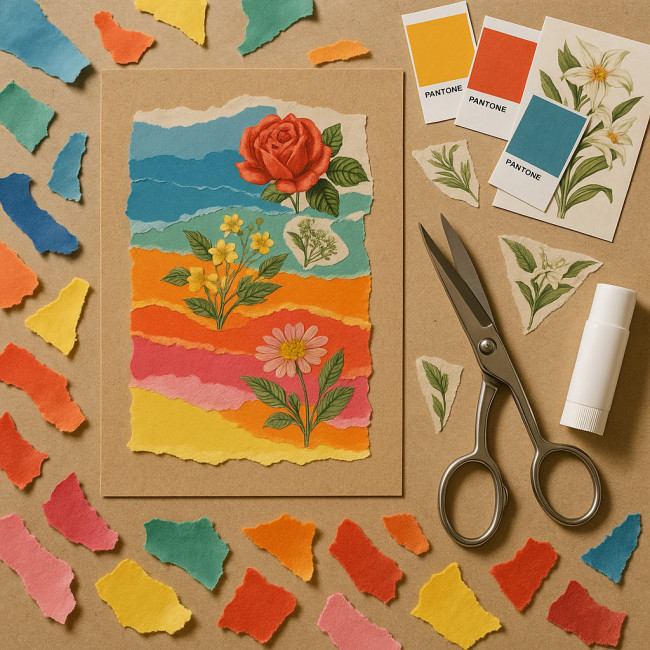
A well-structured collage project brief bridges the gap between abstract brand moodboards and tangible, scroll-stopping visuals. Define objectives, lock technical specs, and clarify licensing upfront to empower your collagist. Ready to commission your own layered masterpiece? Reach out to vetted artists or explore more briefs that inspire on our platform.
Call to action: Build your draft brief today and send it to a collagist for a free feasibility scan—your brand's next standout visual may only be a torn edge away.
